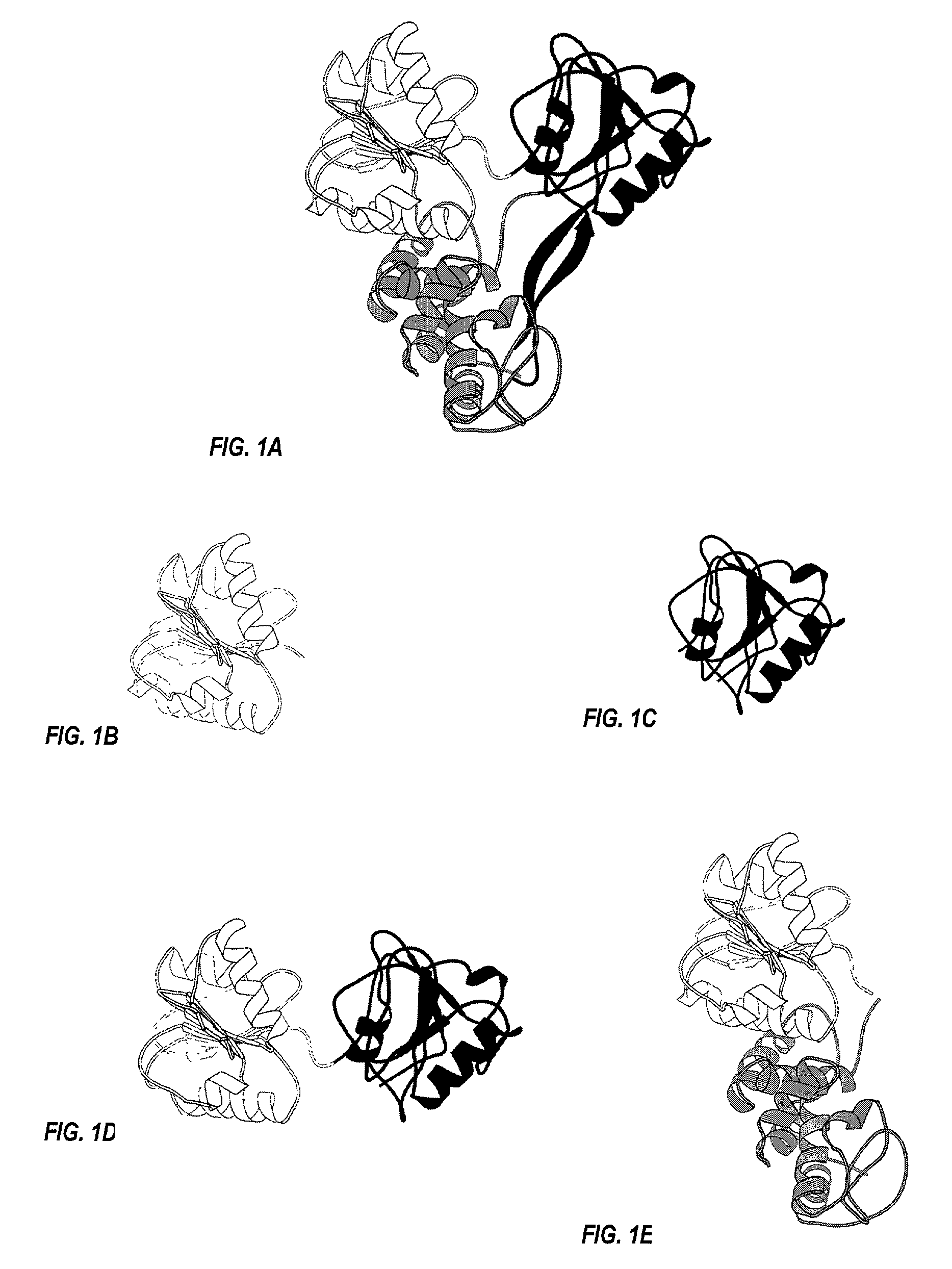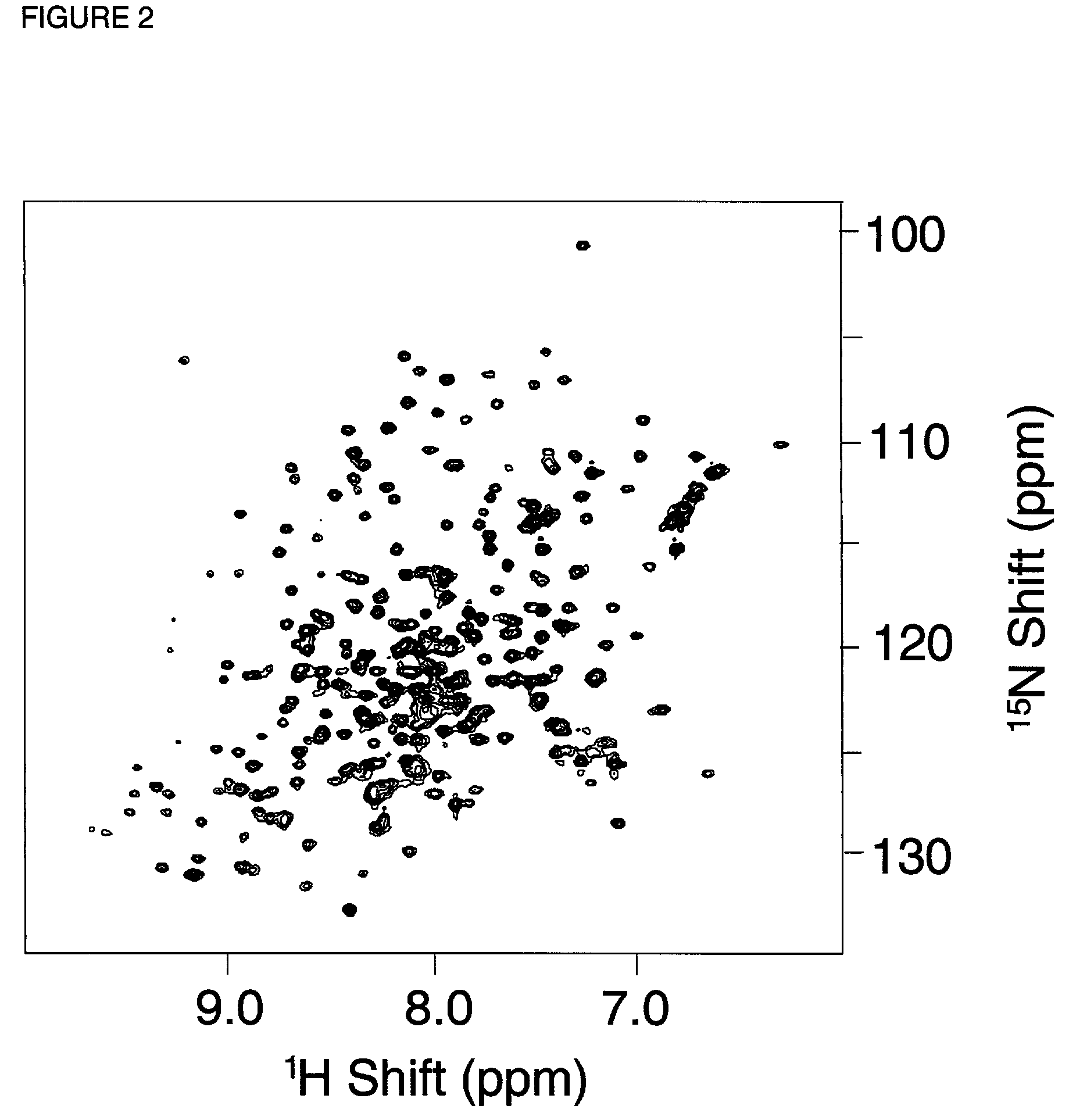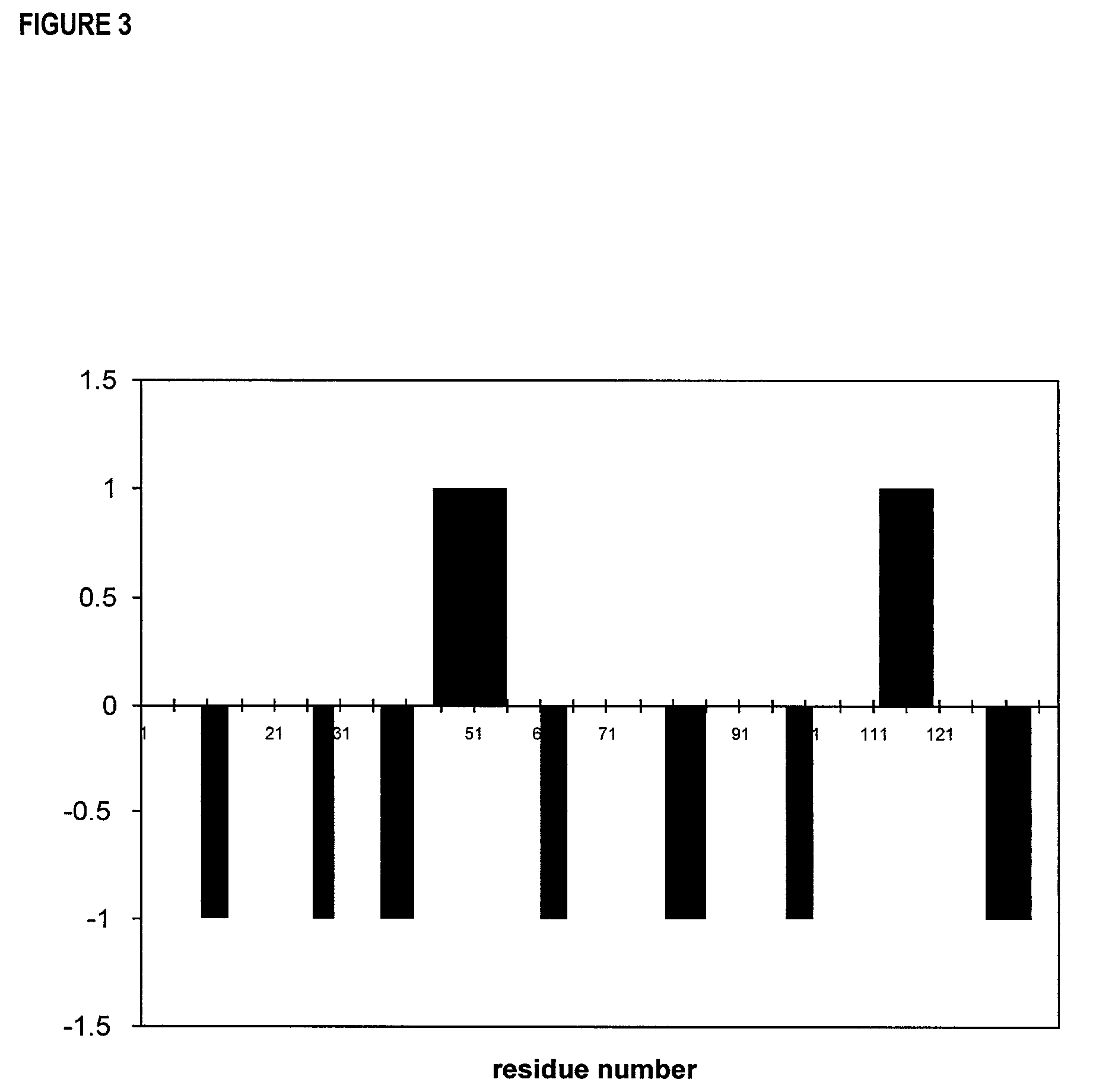Hepatitis C virus NS3 helicase subdomain I
a technology of hcv ns3 and helicase, which is applied in the field of fragments of hcv ns3 rna helicase, can solve the problems of inability to report suitable hcv helicase subdomains or fragments, and the methods are currently limited, and achieves the effects of large-scale production, easy optimization, and stable hcv helicase fragments
- Summary
- Abstract
- Description
- Claims
- Application Information
AI Technical Summary
Benefits of technology
Problems solved by technology
Method used
Image
Examples
example 1
Construction, Expression and Purification of HCV NS3 Helicase Subdomain I
[0084]pNS3(181-324) was derived from plasmid pJC84 [Grakoui et al., J Virol, 67: 1385-1395 (1993)] which encodes the entire NS3 region of the 1a strain of HCV (SEQ ID NO: 1). The gene encoding HCV NS3 helicase subdomain I (i.e., residues 181-324 of HCV NS3 helicase from HCV-1a) was PCR amplified from pJC84 using primers which incorporate a NdeI site at the 5′ end of the gene and a HindIII site at the 3′ end. The PCR product was digested with the appropriate enzymes, gel purified and ligated into pet28b(+) (Novagen, Madison, Wis.), which was also prepared with NdeI and HindIII. The ligation reaction was used to transform competent E. coli XL2-Blue (Stratagene, La Jolla, Calif.) which were selected on LB agar plates with kanamycin (30 μg / ml). Recombinant clones were identified by PCR gene amplification and sequencing. The resulting plasmid, pNS3(181-324), encodes a fusion protein of HCV NS3 helicase subdomain I (...
example 2
Construction, Expression and Purification of HCV NS3 Helicase Subdomain IIΔ
[0087]The helicase fragment of this example was prepared substantially as described in Example 1, except as otherwise noted.
[0088]pNS3(327-430,SDGK,452-481) was derived from plasmid pJC84. The gene encoding HCV NS3 helicase subdomain IIΔ (327-430,SDGK,452-481; SEQ ID NO: 4), i.e., residues 327-481 of helicase derived from HCV-1a with residues 431-451 replaced by the amino acid sequence SDGK (SEQ ID NO: 2), was constructed from pJC84 in two pieces. The DNA sequence encoding residues 327-430 was amplified with a NdeI site in the upstream primer and the nucleotides encoding S-D-G-K (SEQ ID NO: 2) in the reverse primer. The DNA sequence encoding residues 452-481 was amplified with the nucleotides encoding for S-D-G-K (SEQ ID NO: 2) in the forward primer and a HindIII site in the reverse primer. The amplified DNA fragments were purified and then mixed for another round of PCR using the same forward primer used to ...
example 3
Construction, Expression and Purification of HCV NS3 Helicase subdomain I,IIΔ
[0091]The helicase fragment of this Example was prepared substantially as described in Example 1, except as otherwise noted.
[0092]pNS3(181-430,sDGK,452-481) was derived from plasmid pJC84. The gene encoding HCV NS3 helicase subdomain I,IIΔ (181-430,SDGK,452-481; SEQ ID NO: 5), i.e., residues 181-481 of helicase derived from HCV-1a with residues 431-451 replaced by amino acids SDGK (SEQ ID NO: 2), was constructed from pJC84 in two pieces. The DNA sequence encoding residues 181-430 was amplified with a NdeI site in the upstream primer and the nucleotides encoding the amino acid sequence SDGK (SEQ ID NO: 2) in the reverse primer. The DNA sequence encoding residues 452-481 was amplified with the nucleotides encoding S-D-G-K (SEQ ID NO: 2) in the forward primer and a HindIII site in the reverse primer. The amplified DNA fragments were subjected to another round of PCR using the forward primer for residues 181-43...
PUM
| Property | Measurement | Unit |
|---|---|---|
| temperature | aaaaa | aaaaa |
| molecular mass | aaaaa | aaaaa |
| molecular mass | aaaaa | aaaaa |
Abstract
Description
Claims
Application Information
 Login to View More
Login to View More - R&D
- Intellectual Property
- Life Sciences
- Materials
- Tech Scout
- Unparalleled Data Quality
- Higher Quality Content
- 60% Fewer Hallucinations
Browse by: Latest US Patents, China's latest patents, Technical Efficacy Thesaurus, Application Domain, Technology Topic, Popular Technical Reports.
© 2025 PatSnap. All rights reserved.Legal|Privacy policy|Modern Slavery Act Transparency Statement|Sitemap|About US| Contact US: help@patsnap.com



